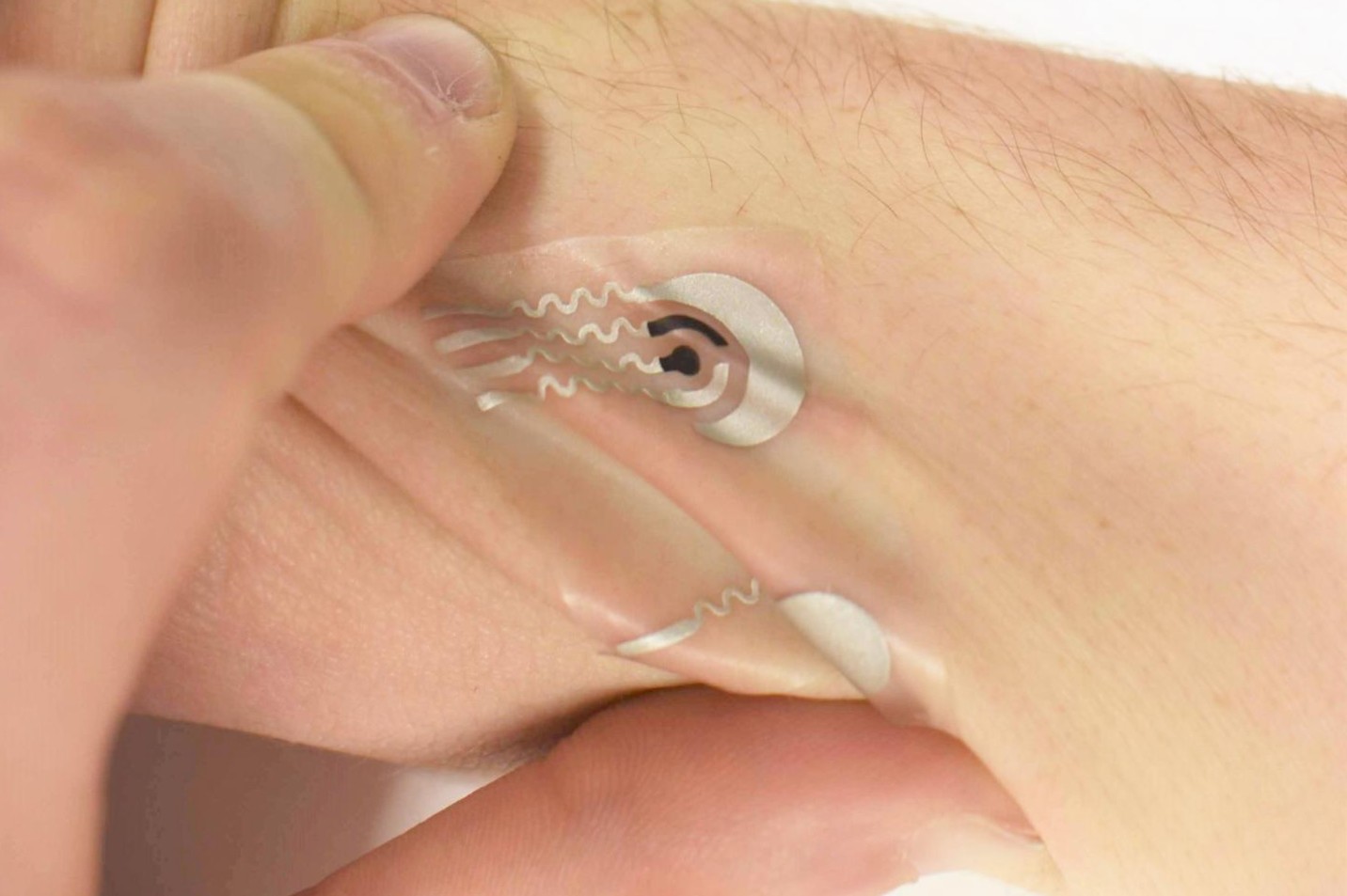Vitamin C supports the immune system, plays a key role in wound healing, and may even aid in recovery from COVID-19. So, how do you do know if you’re getting enough of it? Well, a wearable sweat-analyzing sensor could soon tell you.
Developed by scientists at the University of California, San Diego, the prototype device takes the form of a thin, flexible, stretchable patch that is temporarily adhered to the user’s skin. It incorporates flexible electrodes, which in turn contain an enzyme known as ascorbate oxidase.
Once applied, the patch causes the underlying skin to sweat. If any vitamin C is present in the sweat, the ascorbate oxidase will convert it into dehydroascrobic acid. This process not only consumes oxygen, but also generates an electrical current.
As measured by the sensor, the strength of that current varies in accordance with the vitamin C levels in the sweat, which correspond to those in the bloodstream. Once hooked up to a small circuit board, the present prototype wirelessly transmits that data for further analysis.

University of California, San Diego
Over a two-hour period, the sensor patch was accurately able to track the changing vitamin C levels in four test subjects who had consumed vitamin C supplements and vitamin C-rich fruit juices. It was also effective at detecting the vitamin in tears and saliva, plus the technology could likely be adapted to sense additional compounds.
“A user could track not just vitamin C, but other nutrients – a multivitamin patch, if you will,” says PhD candidate Juliane Sempionatto, first author of the study. “This is a field that will keep growing fast.”
A paper on the research, which is being led by Prof. Joseph Wang, was recently published in the journal ACS Sensors.
Source: UC San Diego Jacobs School of Engineering
Source of Article